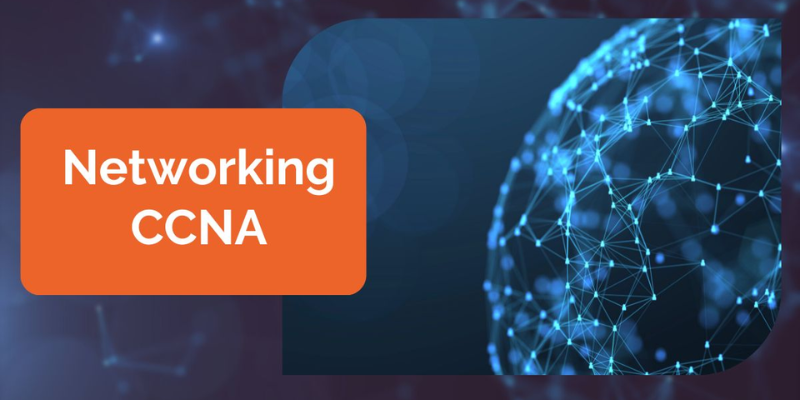What Role Does CCNA Play in Networking?

CCNA is a widely recognized certification for computer network engineers offered by Cisco Systems. It is applicable to various professionals, including entry-level network engineers, network administrators, network support engineers, and network specialists. The certification covers a broad range of networking concepts, such as OSI models, IP addressing, and network security, helping individuals become proficient in these areas. You can enrol in the CCNA Course in Kolkata at FITA Academy, where you will receive focused training to attain CCNA Certification.
Why to Obtain a CCNA certification?
-
The certification confirms proficiency in configuring, troubleshooting, and managing medium-level switched and routed networks, including WAN connections to remote sites.
-
It instructs candidates on establishing point-to-point networks.
-
It instructs on meeting user requirements by selecting the appropriate network topology.
-
It instructs on meeting user requirements through the selection of network topologies.
-
It covers the construction of network addresses.
Exploring the Importance of Networking
A network refers to more independent devices or computers connected to share resources. These devices can be linked via cables, telephone lines, radio waves, or infrared light beams. Explore CCNA Course in Delhi, which helps the learn more about Networking fundamentals in CCNA.
Common types of networks include:
-
Local Area Networks (LANs)
-
Wide Area Networks (WANs)
Local Area Networks (LANs)
A Local Area Network (LAN) comprises computers and peripheral devices connected within a restricted area like a school, laboratory, home, or office building. LAN, short for Local Area Network, is commonly used for sharing resources such as files, printers, games, and applications. The most basic LAN setup might involve linking computers and a printer within a home or office environment. Usually, LAN typically operates with a sole transmission medium.
Wide Area Networks (WANs)
Wide Area Network (WAN) is a significant computer network spanning a vast geographical area. WANs connect LANs across different locations using technologies like telephone lines and radio waves. They are typically used within enterprises or organizations and rely on advanced telecommunications circuits for establishment.
Internetworking Devices Used on Network
To establish an internet connection, various internetworking devices are necessary. Here are some commonly used devices in setting up the internet:
NIC
A Network Interface Card (NIC) is a printed circuit board installed in workstations to establish a physical connection with network cables. While NIC operates primarily at the physical layer of the OSI model, it also functions as a data link layer device. NICs enable data exchange between the workstation and the network, managing the transmission of data across the wire.
Hubs
A hub extends the reach of a network cabling system by amplifying and retransmitting signals. Functioning as multiport repeaters, hubs do not manage or inspect data. They simply connect workstations and broadcast transmissions to all connected devices indiscriminately.
Bridges
As networks grow larger, they can become increasingly difficult to manage effectively. To address this, larger networks are often segmented into smaller LANs connected by bridges. This approach reduces network traffic congestion and monitors packet movement between segments. Bridges also track MAC addresses associated with various ports to manage network traffic effectively.
Switches
Switches have predominantly supplanted bridges because of their enhanced speed and intelligence. Unlike bridges, switches can transmit data specifically to individual workstations. This capability allows each workstation to communicate independently over the network, similar to multiple private conversations happening simultaneously on a modern phone line.
Routers
Routers are employed to efficiently route data to its destination by determining the most optimal path. Operating at the Network layer (Layer 3), routers communicate using IP addresses rather than physical (MAC) addresses. They connect multiple networks together, such as various Internet Protocol networks, and can interface different network types like Ethernet, FDDI, and Token Ring.
Brouters
A brouter combines the functions of both a router and a bridge. It functions as a filter, permitting specific data into the local network while routing unknown data to another network.
Modems
It is a device that converts computer-generated digital signals into analog signals, which then travel through phone lines.
Exploring the TCP/IP Internet Layer
To grasp the TCP/IP internet layer, consider this example: When we enter a web address in a browser, our request is sent to a server. The server then responds to our request. This communication over the internet is enabled by the TCP/IP protocol, which breaks messages into small packets for transmission and reception. Joining the CCNA Course in Jaipur could be a valuable step forward in your career.
The Internet layer in the TCP/IP reference model handles data transfer between source and destination computers. This layer encompasses two primary functions:
-
Sending data to the Network Interface layers
-
Directing data to the correct destinations
Exploring the TCP/IP Transport Layer
The transport layer, also known as the Host-to-Host Transport layer, facilitates session and datagram communication services for the Application layer. Key protocols within the Transport layer include the UDP and TCP.
-
TCP handles packet sequencing, acknowledgement, and recovery of lost packets during transmission, ensuring reliable delivery. Protocols like FTP, HTTP, SMTP, POP, and IMAP operate under TCP for secure transmission.
-
UDP is employed for transferring small amounts of data and does not ensure packet delivery.
So far, CCNA plays a crucial role in networking by equipping individuals with essential skills in configuring, managing, and troubleshooting networks, as well as understanding network protocols and technologies. Enrol in a CCNA Course in Ahmedabad that includes comprehensive coverage of network security and other essential topics.
- Questions and Answers
- Opinion
- Story/Motivational/Inspiring
- Technology
- Art
- Causes
- Crafts
- Dance
- Drinks
- Film/Movie
- Fitness
- Food
- Games
- Gardening
- Health
- Home
- Literature
- Music
- Networking
- Other
- Party
- Religion
- Shopping
- Sports
- Theater
- Wellness
- News
- Culture
- War machines and policy

